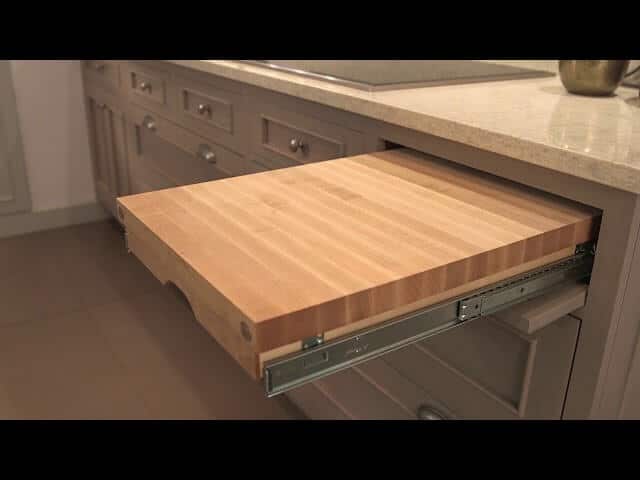Most of us think of cutting boards as everyday kitchen essentials. We chop veggies, slice fruit, prep meats, and barely give them a second thought. But here’s a fun piece of history you probably didn’t know—those pull-out cutting boards that slide right out from under your countertop? They weren’t originally made for general food prep at all. In fact, their very first purpose was for breadmaking.
Back in the day, bakers relied on large pull-out cutting boards as their main bread station. The board provided a sturdy surface for kneading dough and shaping loaves. Once the kneading was done, the same board became the perfect place to let the dough rise. After that, the loaves were ready for the oven. Over time, this evolved into the multi-use cutting boards we know today.
Now, cutting boards are used for just about everything. They come in materials like plastic, bamboo, and wood. But one type still stands above the rest—maple wood. Maple is a hardwood that’s strong, durable, and resistant to deep knife marks. It also naturally resists bacteria, making it safer than many plastic or bamboo boards, which can trap germs inside scratches and grooves.
Taking care of your board is just as important as using it. A quick clean with baking soda or kosher salt and a slice of lemon will scrub away food residue. Rinse with hot water, pat dry with a clean towel, and treat it with food-grade cutting board oil to prevent cracks or drying out. With the right care, a quality maple board can last for years, giving you a safe and reliable surface every time you cook.
Cutting boards themselves have changed with time, adapting to every new kitchen trend. From professional chefs to casual home cooks, they remain one of the most useful tools you can own. And if you’ve been inspired by their breadmaking origins, why not try baking your own bread at home?
Home baking surged during the pandemic, and many people discovered how rewarding (and economical) it is. Unlike store-bought bread, homemade loaves let you control the ingredients and skip preservatives. YouTube creators like Becca Beach share simple bread recipes that prove anyone can do it. Her “Homemade Bread – SUPER Easy and Delicious!” tutorial is a perfect example.
Speaking from experience, baking bread at home is both fun and deeply satisfying. The aroma filling your kitchen, the golden crust, and that first warm slice make it worth the effort. My family loved it so much that baking became a weekly ritual.
So, while today’s cutting boards have evolved into all-purpose prep tools, their history as a breadmaker’s companion adds a charming layer of tradition. Keep yours clean, treat it well, and it’ll serve you faithfully for years. And if you’re ready to embrace the spirit of the past, grab a maple board, find a recipe online, and start kneading—you might just fall in love with breadmaking.
